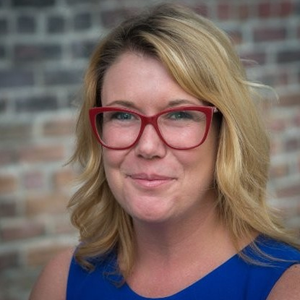For the last two decades, I’ve had an incredible journey navigating through the ever-changing world of marketing.
I've explored everything from the nitty-gritty of field marketing to the creativity in product and brand marketing, and so much more. It's been a fascinating ride exploring various facets of the vast marketing field.
Along the way, I've had the opportunity to collaborate within marketing teams of all shapes and sizes, and even lead them, driving revenue growth for each organization.
What's truly fascinating, however, is the pivotal role I've discovered that Sales Development Representatives (SDRs) can play across these diverse areas of marketing.

In this article, we'll explore how the strategic integration of SDRs can impact your field marketing efforts, provided you chart a clear course for their objectives and define the metrics of success.
Synchronizing SDR and field marketing
As any Field Marketer knows they are often responsible for interacting with the brand's customer/prospect base to inform, educate, influence, and persuade them towards a purchase decision.
Field marketers typically have a mixture of sales and marketing expertise and engage with customers/prospects across several touch points such as events, trade shows, conferences, webinars, and in-person meetings.
The role of field marketing
Field marketing starts by meticulously defining the brand's intended audience or demographic, factoring in criteria such as age, gender, location, and interests.
As such, these activities pair nicely with SDR teams as they are often targeted with driving prospects to take meetings as well as attend events.
There are a few ways I've effectively synchronized SDR efforts with field marketing initiatives, yielding tangible outcomes in terms of pipeline generation and successfully closed deals.

Crafting the ICP for targeting
My typical approach involves close collaboration with Product Marketing to craft our Ideal Customer Profile (ICP), which serves as the compass guiding the targeting efforts of both field marketing and SDR teams.
Once the ICP has been defined, I then create a sound strategy for who SDRs should be reaching out to in an effort to drive meetings or attendance to events. Having a focused approach ensures that you’re not doing ‘spray and pray’ campaigns but rather deploying your resources in areas where you’re most likely to win business.
Now that the ICP has been determined I will then look at the buyers journey to determine what channels our prospects are engaging with, then work with the content team to develop content that makes sense for those channels and where the buyer is in their journey (awareness, research, consideration, purchase, retention advocacy).

Developing a comprehensive field marketing strategy
After we have crafted a well-honed field marketing strategy, complete with the identification of strategic geographic locations for marketing endeavors and the formulation of engagement tactics designed to resonate with our target audience we work to deploy this through field marketing teams.
Field marketing's arsenal often includes orchestrating or participating in a spectrum of events tailor-made for the anticipated audience. These gatherings span a wide range, from high-profile trade shows, conferences, and product launches to locally hosted or sponsored events and webinars.
Here, the synergy between SDRs and field marketing comes into play, with SDRs playing a pivotal role in bolstering event attendance and executing post-event follow-ups. This collaborative approach is a cornerstone of our standard marketing-to-sales playbook, ensuring we extract maximum value from each event.

Establishing a strategic event calendar
Before charting the role of SDRs in your event strategy, it's crucial to establish a well-defined event calendar for the year. This foundational step enables you to precisely gauge how SDRs can augment each event's success.
Once the events calendar is in place, the next phase involves forecasting and modeling to determine the anticipated impact of these events in achieving our targets.
For instance, this entails calculating the number of leads required from these events, which will subsequently convert into sales opportunities, ultimately contributing 'x' amount of revenue toward your organization's sales target.
With your event goals firmly established, it's time to integrate SDR support into the mix. For instance, if you aim to draw 50 attendees to your locally hosted event, you can now set specific targets for SDRs to secure 100 RSVPs through targeted outreach efforts.
Leveraging your baseline email performance metrics, you can calculate the necessary volume of emails required to generate the desired level of opens and clicks that will ultimately drive the desired RSVPs.
The strategic advantage of SDRs in post-event engagement
Incorporating SDRs into the post-event phase is a strategic move that offers a multitude of benefits. Firstly, they can play a pivotal role in following up with event attendees to provide them with valuable information that aligns with their interests or needs.
This proactive engagement not only keeps your brand fresh in the minds of prospects but also demonstrates a commitment to delivering value beyond the event itself, fostering trust and credibility.
SDRs excel at initiating post-event conversations aimed at setting up discovery meetings. These meetings provide a platform for in-depth discussions about the prospect's specific business needs, challenges, and goals.
This step is crucial because it allows for a more personalized and tailored approach to sales discussions, positioning your organization as a solution provider rather than merely a sales entity.
SDRs serve as the bridge that nurtures leads from initial event interest to meaningful, one-on-one engagements, ultimately enhancing the likelihood of successful conversions and long-term customer relationships.
Final thoughts
Incorporating SDRs into our field marketing strategies has proven to be a transformative enhancement, significantly elevating the overall effectiveness of our events and campaigns. By introducing SDRs as a direct and personalized sales touchpoint for event attendees and prospects, we've experienced a profound shift in our marketing outcomes.
SDRs excel in engaging with potential leads, swiftly qualifying them, and nurturing them through the sales funnel. This strategic approach has translated into tangible benefits, including higher conversion rates and a more substantial impact on our bottom line.
Their ability to establish genuine connections with prospects, understand their unique needs, and tailor communication accordingly has not only increased the likelihood of conversions but has also fostered stronger, long-lasting customer relationships.
SDRs have emerged as a linchpin in our field marketing initiatives, bridging the gap between marketing efforts and sales success. Their contribution has become integral to our overarching strategy, empowering us to achieve our goals with precision and effectiveness.
Want to share your thoughts on this article? Join our Slack community where we have a dedicated Field Marketing channel.



